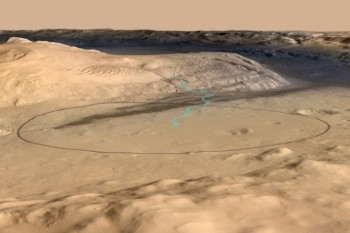Martian Mile-High Mounds Mystery: The Answer Is Blowing in the Wind
April 12, 2016

Credit: NASA/JPL-Caltech/ESA/DLR/FU Berlin/MSSS
Rising from the floor of Gale Crater on Mars, a stack of sedimentary rock called Mount Sharp towers 5.5 kilometers above the ground. The mountain is only a little shorter than North America’s tallest peak, Alaska’s Mount Denali (nearly 6.2 kilometers high). Monstrous mountains on Earth are usually created by colliding plates of the planet’s outer shell or by erupting volcanoes. But Mars does not have this kind of plate activity and its volcanoes have probably not been active for at least 500 million years. So planetary scientists have been stumped as to how Mount Sharp—and dozens of other giant peaks that rise from various Martian craters—formed. It has been an enduring puzzle since NASA’s Viking spacecraft first spotted these mounds in the 1970s.
Scientific American, April 6, 2016
The Daily Mail, March 31, 2016
IFL Science, April 5, 2016
EarthSky, April 4, 2016
Featuring: Mackenzie Day, Ph.D. student, Jackson School of Geosciences
